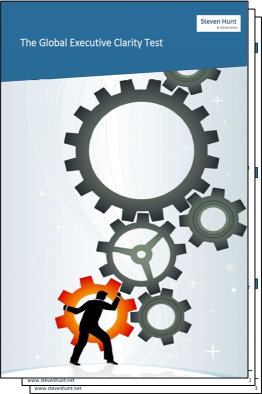Positive performance on global projects starts with the UEA Chain.
British Rail use to run the trains in the UK. It couldn’t get the trains to arrive on time. Their solution to the punctuality problem: re-define “on time”. So a train was on time when it arrived within 10 minutes of the planned arrival. Hey presto! They invented the 70-minute hour.
This had two consequences, both bad. Customers got even less of what they wanted: punctual trains. Secondly, it stopped managers focusing on customers’ needs.
Instead the managers focused on the performance indicator – the 70-minute hour – and spent the other half of the day perfecting a string of excuses for late trains. It cemented a culture of under-performance.
Maintain the UEA Chain
Getting performance indicators right starts with the UEA Chain. That’s Understanding – Evaluation – Action.
Global managers can’t be in two countries at the same time. When they manage more than one global site, it’s almost impossible to know every market, all of your customers, and the operating environment.
That’s why it pays to understand what is happening, before evaluating performance and taking action.
I’m co-leading a client project, with the other project lead in New York. We’ve taken two hours in get-to-know-you sessions before we define the measurable factors – goals, phases, steps, and deadlines. It’s a small investment upfront which makes sure we move faster to our goals.
I’ve also advised a global sales director who goes on the road with local sales reps in different countries. In some countries, he can’t speak the local language. He sits in customer meetings nodding and smiling. Pointless? Absolutely not. Big customers appreciate the thought. And in the car to and from the customer’s site, he chats to the sales rep and has a deeper understanding of the local operating and market environment. By his own analysis, his visits have changed the way his global sales function sets and uses performance indicators and their effectiveness has doubled.
Then there is the global manufacturing director who visits different global production sites and works a shift on the factory floor, so that he understands the local production challenges.
Understanding each indicator and its purpose comes first.
Understanding is part-mental, part-emotional. Because without both, it’s difficult to grasp the full meaning of what is happening.
Above all, understanding saves time in the long-run. Setting performance indicators that have a clear purpose is a must. Because without understanding the purpose managers get obsessed with the indicator itself, as in the 70-minute hour.
Understanding each indicator and its purpose also help lower-level managers to reduce bureaucracy, because not everything can be captured in a spreadsheet or data analytics. It reduces managers’ temptation to manipulate results, because they have to explain results, not just record them. And it is the most pragmatic way to take action on the issues that are most important for your customers.
In short, a high-performance culture starts with global managers having the confidence to get into a robust, open dialog about what their people need and how to measure that with a sensible indicator.

















